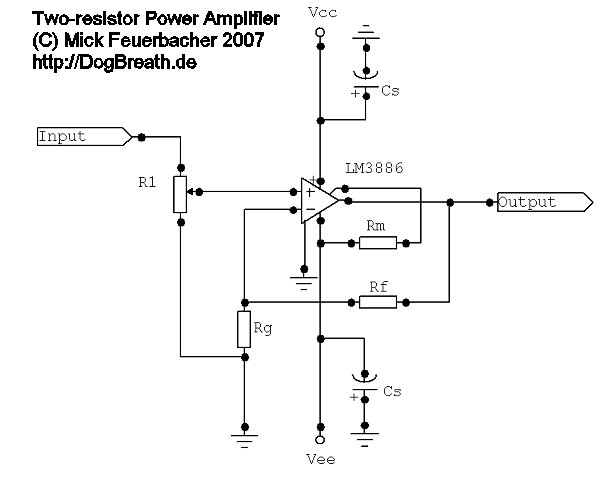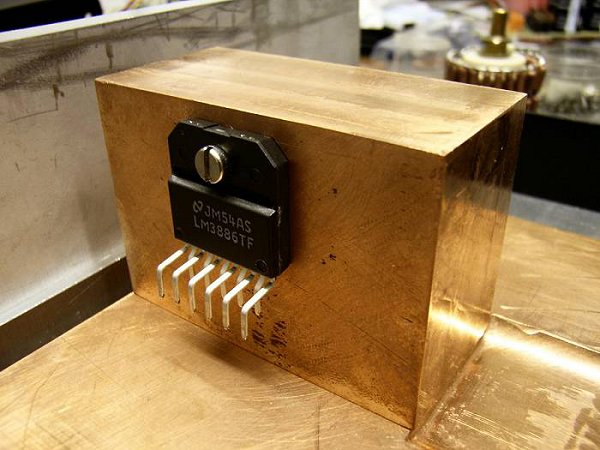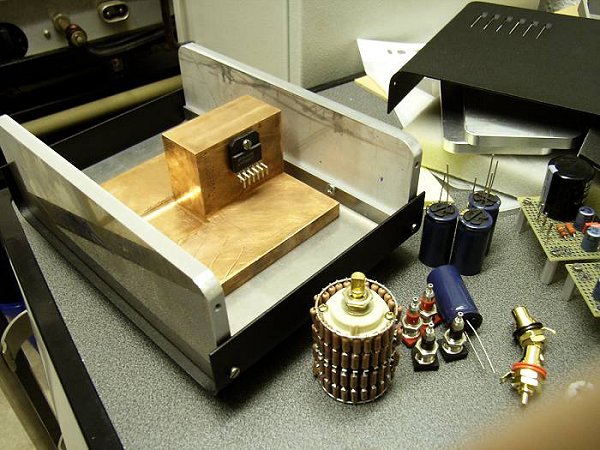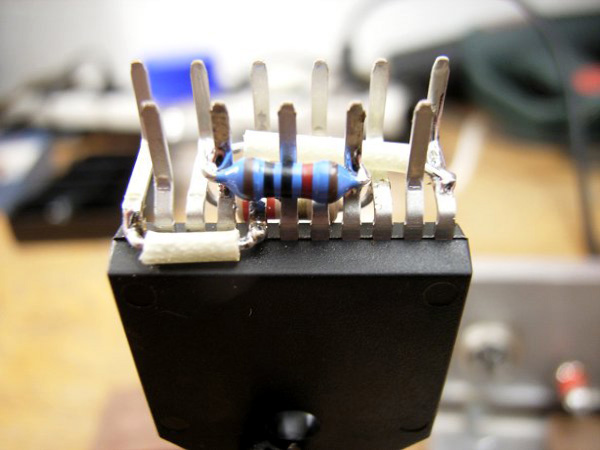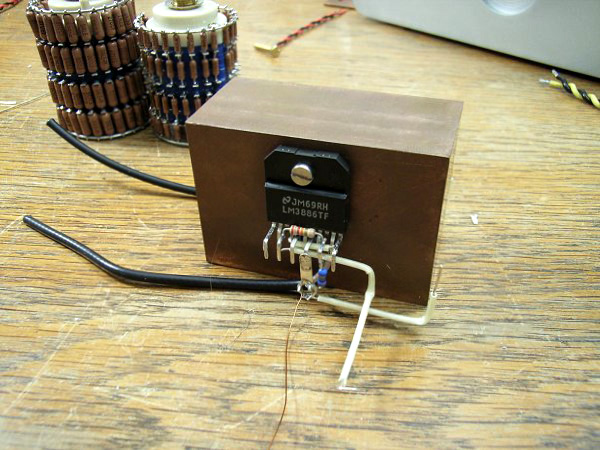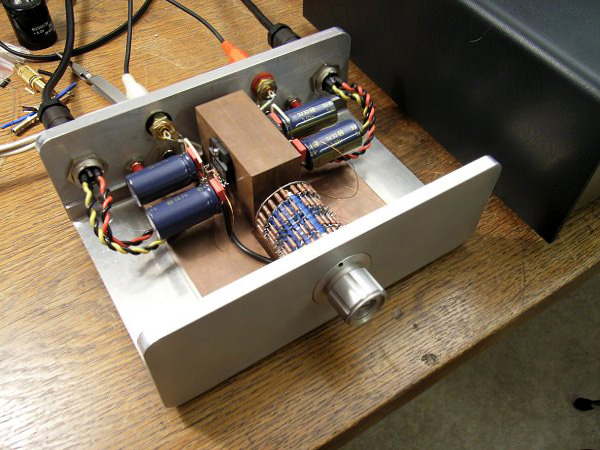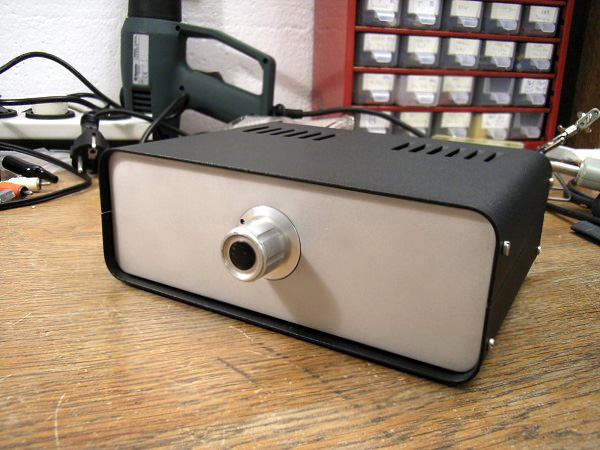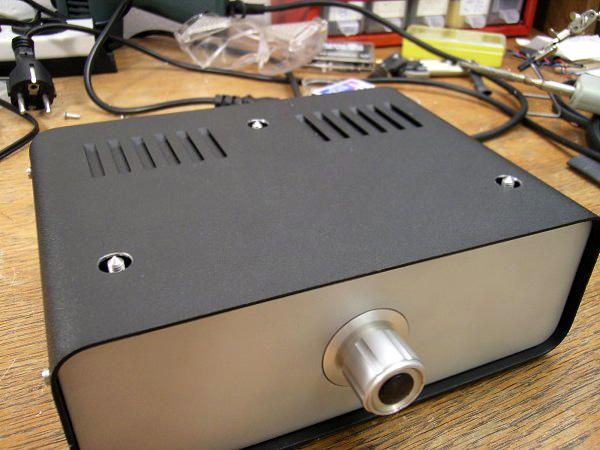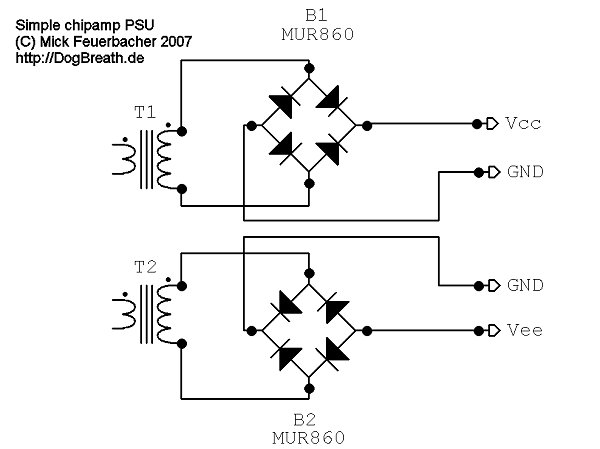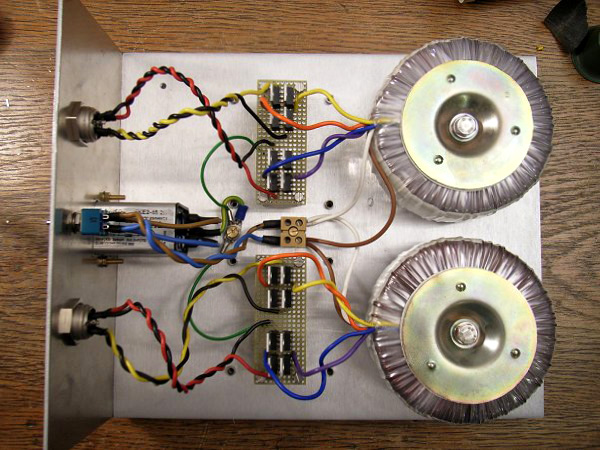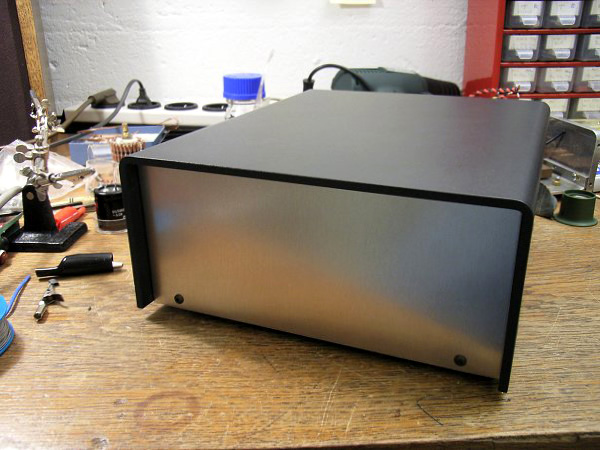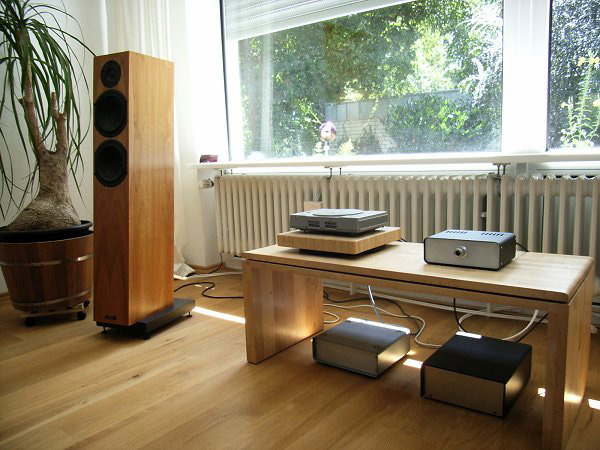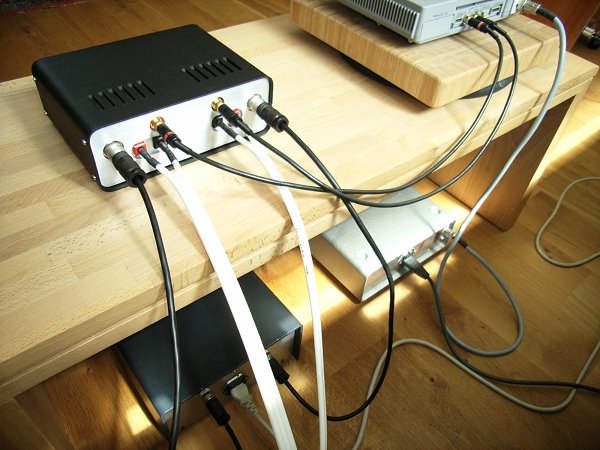|
I decided to build the amp into a commercial case from Conrad. It turned
out that the build quality of the case was very low. The front and back
plates were made of awfully thin aluminum and the screw connections were
worn right from the beginning.
Therefore I only used the upper and lower steel covers and made the complete
rest by myself, using massive aluminium. The front and back plates are
8 mm thick, the bottom plate is 4 mm.
On the picture you also see some of the parts to be used. The Cs capacitors
are well approved Panasonic FC types, the pot is a stepped attenuator
as sold by http://diyfidelity.com.au/.
|
